Changing Wheel Bearing yourself – manuals and video tutorials
Changing Wheel Bearing: step-by-step guides
Most viewed video tutorials on the installation of Wheel Bearing
 Wheel bearing repair [AUTODOC TUTORIAL]
Wheel bearing repair [AUTODOC TUTORIAL] How to change Front wheel bearing on VW GOLF 4 TUTORIAL | AUTODOC
How to change Front wheel bearing on VW GOLF 4 TUTORIAL | AUTODOC How to change a rear wheel bearing on BMW 5 E60 TUTORIAL | AUTODOC
How to change a rear wheel bearing on BMW 5 E60 TUTORIAL | AUTODOC How to change front wheel bearing on MERCEDES-BENZ M W163 TUTORIAL | AUTODOC
How to change front wheel bearing on MERCEDES-BENZ M W163 TUTORIAL | AUTODOC How to change front wheel bearing HONDA JAZZ 1 TUTORIAL AUTODOC
How to change front wheel bearing HONDA JAZZ 1 TUTORIAL AUTODOC How to change wheel bearing on FORD FIESTA V Van [TUTORIAL AUTODOC]
How to change wheel bearing on FORD FIESTA V Van [TUTORIAL AUTODOC] How to change wheel bearing on BMW E46 [TUTORIAL AUTODOC]
How to change wheel bearing on BMW E46 [TUTORIAL AUTODOC] How to change a rear wheel bearing on BMW X5 E53 TUTORIAL | AUTODOC
How to change a rear wheel bearing on BMW X5 E53 TUTORIAL | AUTODOC How to change rear wheel bearing MERCEDES-BENZ E W211 TUTORIAL | AUTODOC
How to change rear wheel bearing MERCEDES-BENZ E W211 TUTORIAL | AUTODOC How to change a rear wheel bearing on VW GOLF 4 TUTORIAL | AUTODOC
How to change a rear wheel bearing on VW GOLF 4 TUTORIAL | AUTODOC How to change front wheel bearing / front hub bearing on VW GOLF 6 (5K1) [TUTORIAL AUTODOC]
How to change front wheel bearing / front hub bearing on VW GOLF 6 (5K1) [TUTORIAL AUTODOC] How to change front wheel bearing MERCEDES-BENZ E W210 TUTORIAL | AUTODOC
How to change front wheel bearing MERCEDES-BENZ E W210 TUTORIAL | AUTODOC![How to change front wheel bearing on VW PASSAT B6 [TUTORIAL AUTODOC]](https://i.ytimg.com/vi/j3nrD4eiQYM/mqdefault.jpg) How to change front wheel bearing on VW PASSAT B6 [TUTORIAL AUTODOC]
How to change front wheel bearing on VW PASSAT B6 [TUTORIAL AUTODOC] How to change Front wheel bearing on BMW 3 E90 TUTORIAL | AUTODOC
How to change Front wheel bearing on BMW 3 E90 TUTORIAL | AUTODOC How to change front wheel bearing on HYUNDAI GETZ 1 TUTORIAL | AUTODOC
How to change front wheel bearing on HYUNDAI GETZ 1 TUTORIAL | AUTODOC How to change front wheel bearing on VOLVO S60 TUTORIAL | AUTODOC
How to change front wheel bearing on VOLVO S60 TUTORIAL | AUTODOC
Replacing Wheel Bearing: TOP manuals for changing
Want to get more useful information?  Ask on the forum
Ask on the forum
Ask questions or share your repair experience on the car forum. Subscribe to updates so you don't miss out on new guides.
Video instructions for changing the Wheel Bearing – playlist by AUTODOC CLUB
 How to change wheel bearing tutorial | Step-by-step video guide
How to change wheel bearing tutorial | Step-by-step video guide
Advices on car maintenance
 Faulty wheel hub bearings: causes, signs, and troubleshooting solutions | Tips from AUTODOC
Faulty wheel hub bearings: causes, signs, and troubleshooting solutions | Tips from AUTODOC How to fix a knocking and creaking suspension | AUTODOC
How to fix a knocking and creaking suspension | AUTODOC BMW E30 Turbo Suspension Swap: Boost Your Handling | AUTODOC project
BMW E30 Turbo Suspension Swap: Boost Your Handling | AUTODOC project Engine Troubleshooting with OBD2 Scanner. Easy Diagnosis Tips | AUTODOC
Engine Troubleshooting with OBD2 Scanner. Easy Diagnosis Tips | AUTODOC
Unlock your car maintenance assistant!
Track expenses, manage logs, schedule replacements, and more.
How to change Wheel Bearing on your car yourself
Common questions about replacing wheel bearings
Other car repair tutorials

Time to replace parts? Get even better deals in our Shop app.

SCAN ME


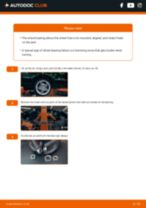

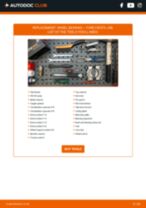
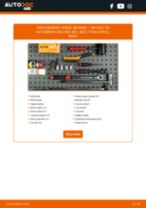
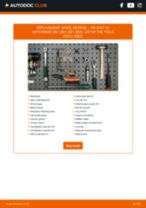
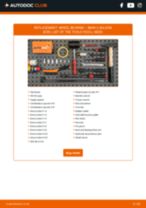
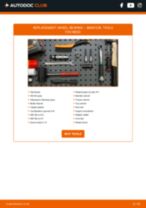
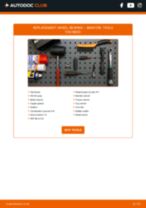
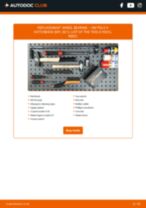
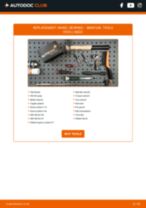
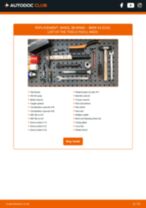
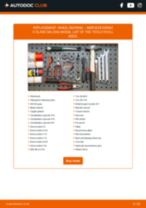
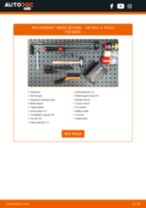
 Play all playlists
Play all playlists






























































